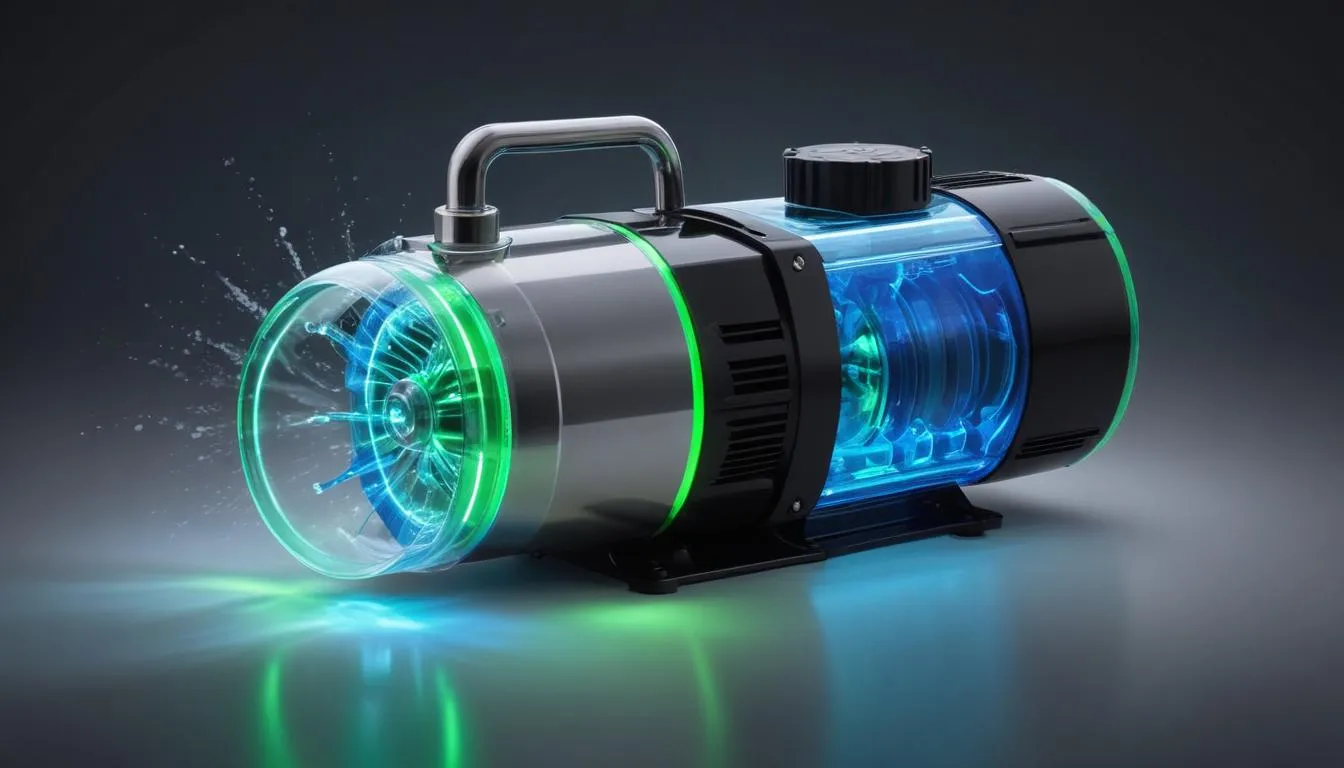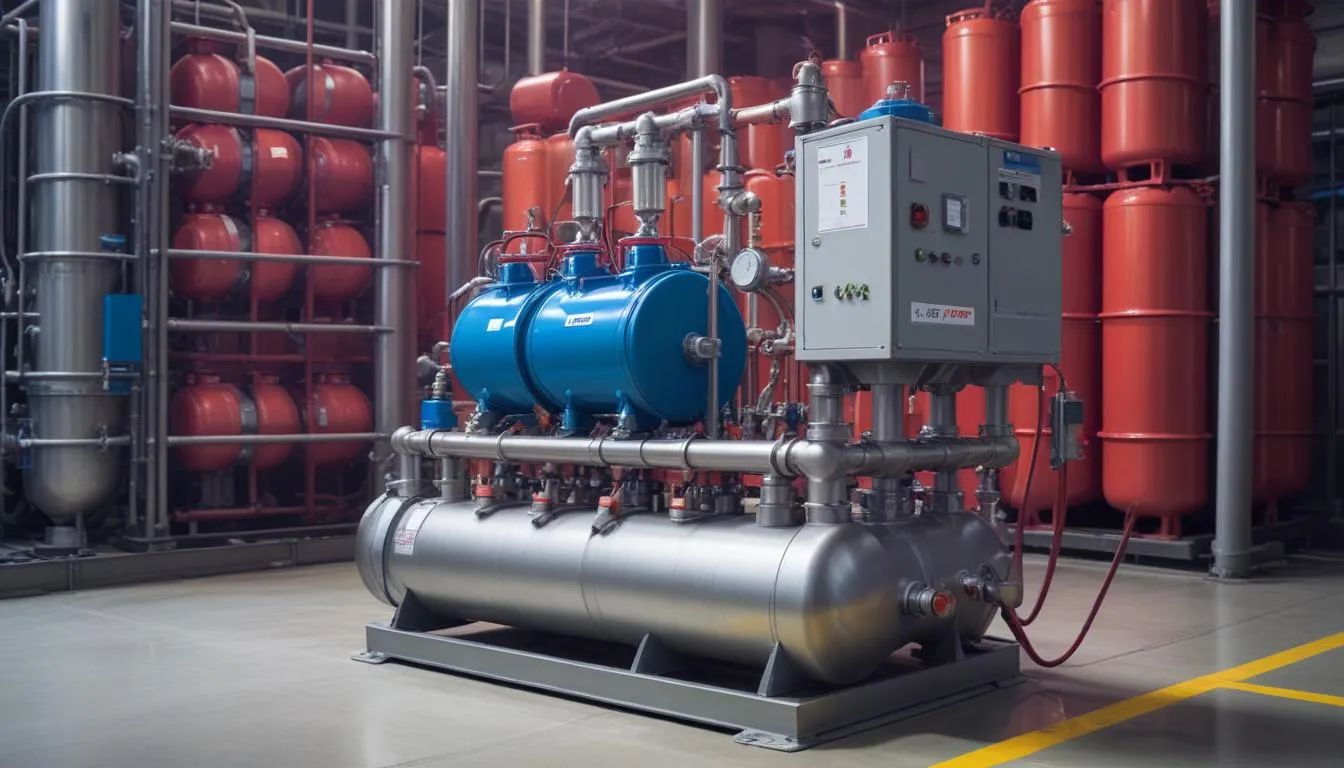 Sealless pumps are a type of pump designed to transport liquids without using a traditional mechanical seal. Instead, these pumps utilize a magnetic drive mechanism or other technologies to create a hermetic seal between the pump’s internal wet end and the external environment. This design eliminates the need for seals that can wear out over time, thus reducing the risk of leaks and enhancing the overall reliability of the pump.
Sealless pumps are a type of pump designed to transport liquids without using a traditional mechanical seal. Instead, these pumps utilize a magnetic drive mechanism or other technologies to create a hermetic seal between the pump’s internal wet end and the external environment. This design eliminates the need for seals that can wear out over time, thus reducing the risk of leaks and enhancing the overall reliability of the pump.
Typically, the primary components of a sealless pump include the following:
- Impeller: Responsible for moving the fluid through the pump.
- Magnetic Drive: This component transmits torque from the motor to the impeller without any direct mechanical connection, ensuring no leaks occur.
- Stator and Rotor: The stator is part of the motor, while the rotor drives the impeller through magnetic forces.
- Pump Housing: Encloses the internal components and protects against external conditions.
In general, sealless pumps can be categorized into several different types, including but not limited to:
- Magnetic Drive Pumps: These pumps use a magnetic coupling to drive the impeller, entirely eliminating external seals.
- Peristaltic Pumps: While not typically categorized as sealless, these pumps do not require internal seals, as they work by compressing a tube with rollers.
- Diaphragm Pumps: These pumps can also operate without seals by using a flexible diaphragm to create pressure differentials.
The construction of sealless pumps allows them to handle various challenging conditions, including volatile, corrosive, or toxic fluids. The absence of seals not only simplifies their design but also extends the lifespan of the pump, making them an increasingly popular choice in industries where fluid containment and safety are critical.
Advantages and Disadvantages
Sealless pumps offer a range of advantages, making them an attractive choice in various applications, but they also come with certain limitations that should be considered.
One of the most significant advantages is the reduced risk of leaks. Since these pumps operate without mechanical seals, there is no wear and tear associated with traditional sealing methods. This characteristic leads to greater reliability, particularly in handling hazardous, volatile, or corrosive liquids. In industries such as chemical processing, oil and gas, and pharmaceuticals, the ability to prevent leaks can significantly enhance safety and compliance with environmental regulations.
Another notable benefit is the lower maintenance requirements. Traditional pumps often require regular inspections and seal replacements, which can be labor-intensive and costly. In contrast, sealless pumps generally require less frequent maintenance, reducing downtime and maintenance costs over the pump’s lifespan. This can result in improved operational efficiency, as facilities can run longer with fewer interruptions.
Additionally, sealless pumps can be more energy-efficient. The magnetic drive technology minimizes energy loss often associated with mechanical connections, translating into lower operational costs. They can also be designed for various flow rates and pressures, providing flexibility in system designs.
On the downside, there are disadvantages to consider. The initial cost of sealless pumps can be higher than that of traditional pumps. This may deter some buyers, especially in smaller operations with tight budgets. Moreover, the technology involved in these pumps can be more complex, requiring specialized knowledge for proper installation and troubleshooting.
Another limitation is the potential for overheating, particularly if the pump runs dry or is not appropriately sized for the application. Running the pump without a sufficient liquid supply can cause the magnetic drive to malfunction or the impeller to become damaged, leading to costly repairs or replacements.
Overall, while sealless pumps present numerous advantages such as enhanced safety, reduced maintenance, and energy efficiency, they also come with limitations relating to cost, complexity, and potential operational issues. Understanding these factors is essential for making informed decisions about using sealless pump technology in various applications.
Applications of Sealless Pumps
 Sealless pumps have a wide range of applications across different industries, primarily due to their ability to handle challenging fluids without the risk of leaks. The unique design of sealless pumps makes them particularly suitable for environments where fluid containment is crucial.
Sealless pumps have a wide range of applications across different industries, primarily due to their ability to handle challenging fluids without the risk of leaks. The unique design of sealless pumps makes them particularly suitable for environments where fluid containment is crucial.
In the chemical processing industry, sealless pumps are employed to transport aggressive chemicals that could damage traditional pumps with mechanical seals. Their ability to operate without leakage minimizes the risks associated with handling hazardous materials, thereby adhering to strict environmental and safety regulations. This makes them an ideal choice for transferring acids, bases, and solvents.
In the oil and gas sector, the transport of both liquids and gases requires pumps that can maintain high reliability under difficult conditions. Sealless pumps effectively manage volatile hydrocarbons, ensuring that spills and leaks are avoided. They are often used in applications such as tank drainage, fluid transfer, and the circulation of materials within refineries and production facilities.
The pharmaceutical industry also benefits significantly from the use of sealless pumps, as they are essential in maintaining sterile conditions throughout drug manufacturing processes. These pumps are capable of handling sensitive fluids and formulations without contamination, which is vital in adhering to the stringent regulatory standards characteristic of the sector.
In water treatment plants, sealless pumps facilitate the movement of corrosive chemicals used in water purification processes, such as chlorine and sulfuric acid. Their resilient structure protects against the damaging effects of these substances, enabling efficient operation in treatment applications.
The food and beverage industry leverages the benefits of sealless pumps for processes that require sanitary conditions. These pumps are utilized for transferring dairy products, juices, and other consumables while adhering to hygiene standards. Their construction minimizes the risk of contamination, ensuring product quality and safety.
Sealless pumps also find usage in cooling systems, where they circulate fluids that require precise control over temperature and pressure without the concern of leaks. In applications where the integrity of the fluid is vital, such as coolant systems in machinery or HVAC setups, these pumps ensure seamless performance.
Some additional applications of sealless pumps include:
- Aerospace: For transporting fuels and chemicals used in aircraft manufacturing and maintenance.
- Power Generation: In nuclear plants for handling various cooling fluids and chemical treatments.
- Clean Rooms: In manufacturing environments that require contamination-free processes.
By accommodating a diverse array of industries and applications, sealless pumps demonstrate their versatility and reliability. The combination of safety, efficiency, and the ability to manage a wide range of fluids under various conditions ensures that these pumps will continue to play a crucial role in modern industrial operations.